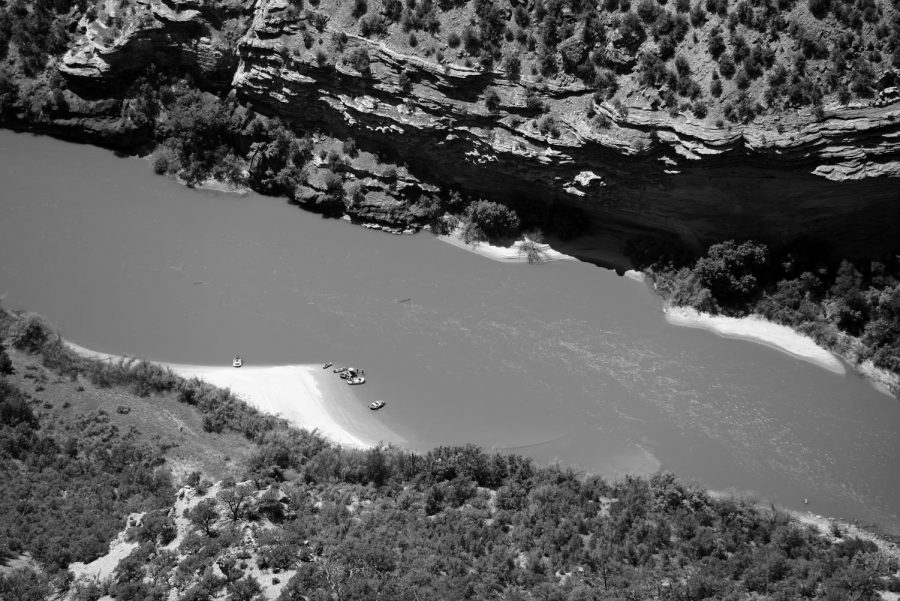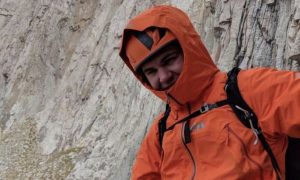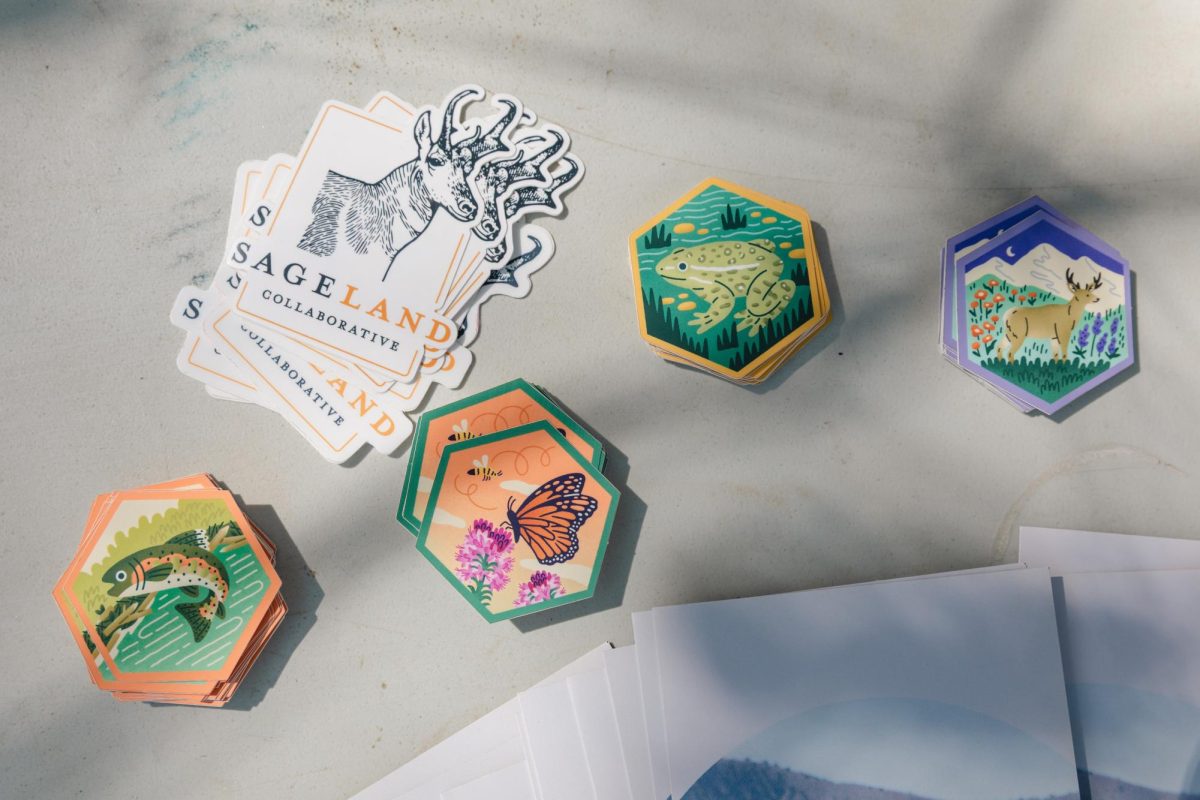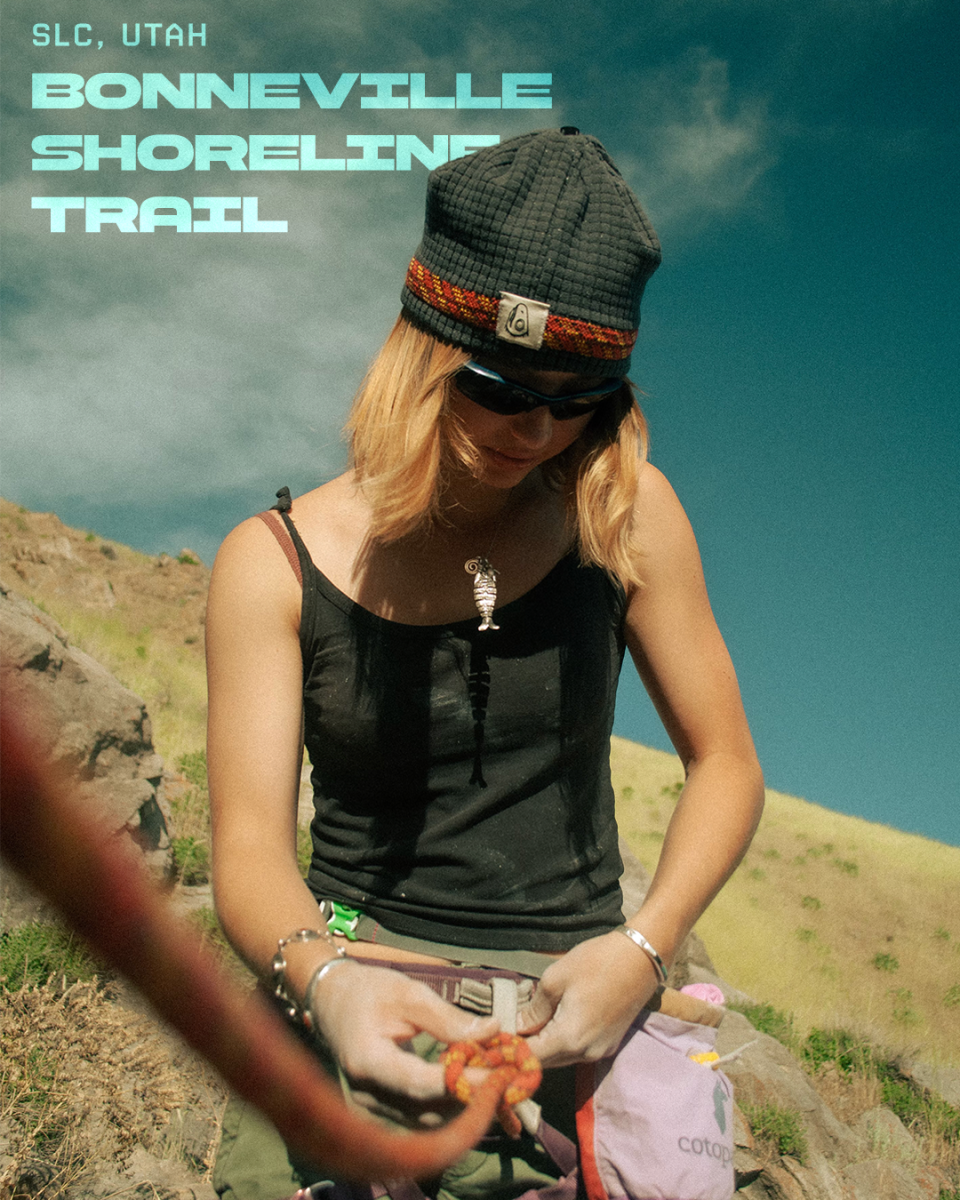From Summits to Seas: Rafting Snowmelt in Utah’s Desert
April 25, 2020
Utah is known for its deep skiing and tall snowpack. As winter days slowly put more and more snow on high elevation ground, the snowpack gets bigger and persists for a longer duration of time. When temperatures rise and snow begins to melt, it flows through drainages and streams to lower elevations. Some of these drainages collect and meld into one another, creating larger bodies of water. Through these melting events, streams become large rivers that provide many Americans with fresh water. However, as the climate slowly changes in America, the average snowpack size decreases. What does this mean for our water supply and recreation?
Although Utah is largely thought of as an arid place, it is the home to many rivers. Some of the largest rivers that flow through the state are the Green and the Colorado Rivers. The Green River has its source in the Wind River Range of Wyoming — where it feeds from melting glaciers. The Colorado River begins at La Poudre Pass Lake — near the Continental Divide in Colorado. As they make their respective ways southwest towards Utah, they are made greater by many supporting tributaries.
When these rivers start, they are quite small. Most recreationists who boat these rivers near their headwaters do so in a small pack raft or kayak. They soon begin to gain volume from other streams that flow into them. For the Green River, the Yampa and White Rivers are the main tributaries. For the Colorado River, the main upper tributaries are the Gunnison and the Dolores Rivers. These tributaries are all fed by snowmelt.
The Green and Colorado Rivers meet at their confluence in Canyonlands National Park. This is a sacred area for many local tribes and native peoples. After this point, they become one Colorado River. The Green River is the largest tributary of the Colorado, and they are roughly the same size when they meet. Their combined strength powers the flow out of Utah and into the Grand Canyon.
The future of these snow-fed rivers is uncertain in a low-snowpack climate. As climate change comes to Utah, snowpacks are accumulating less and melting faster. Temperatures are increasing on average during Utah winters and that means earlier and shorter flows. When the snowpack disappears early and quickly, rivers will flow with low volume early in the year.
To see the effects of this change on tributaries, one can look at Muddy Creek. Muddy Creek is located near Hanksville, Utah and feeds into the Dirty Devil River, which eventually flows into the Colorado before the confluence. Muddy Creek already has variable flows and does not run unless there is a flash flood in the summer or a large volume of snowmelt in the spring. Without this snowmelt volume, the creek would experience an extremely low volume of water into the Dirty Devil. Further down the flow, this will lead to a lack of flow into the main Colorado River.
These effects could be like dominoes for the main water flows in the American West. As climate change gets worse and worse, we will see shorter durations of time with heavy flows into the Colorado. Both as citizens of Utah and recreationists, this will have an impact on our future lives.
Many rivers have their own seasons for recreation. Natural rivers have their high flows in the springtime when the peak of snowmelt is occurring. Some rivers downstream from Utah are dam-controlled and can be released at any point in the year. However, there are not many dam-controlled recreational rivers in Utah. Permits are needed in order to raft most multi-day trips, and only a certain number of permits are given for each river each year. If the window for rafting a river shortens and there are a small number of permits given, this fact could limit the opportunities for many people to have the experience of running a certain section of a river.
Further down the road, this case could be taken to the extreme. Tributaries could dry up completely or run for extremely short periods of time. In this scenario, entire multi-day rafting trips could be wiped off the map completely. Permits would become extremely competitive and a large portion of the rafting community could disappear. Not only would this cause lasting river stretches to become more crowded or harder to enjoy, but it would remove the famous history from these tributaries.
For example, the Yampa River, a tributary of the Green River, was once home to the Shoshone, Ute and other Native American tribes. These tribes used the river as a source of life, and it brought flora and fauna to them. Their lives and culture would be damaged by the flow reduction of this river. The river is home to a large population of beaver, as well as elk and deer. Reducing the flow of this river will put a strain on the animal and plant populations surrounding it.
According to a Colorado River Basin Water Supply and Demand Study by the U.S. Department of the Interior, about 40 million Americans get their everyday water from the Colorado River. With snowpacks dwindling every year, many are realizing that this water source is not completely sustainable. While the population of the American West continues to grow, the water resources are declining. The solution is not clear on how these millions of people will receive clean water if the flow of the Colorado River goes down, but it is sure to be an issue of our future as a society.
It is hard to say what can help this issue on an individual level. If climate change weren’t happening, snowpacks would not be subject to depletion and rivers would be safer. Recreation would be safe, and there would be clean water for 40 million American citizens. Major changes in our society need to be made in order to stop the climate changes that are affecting annual temperatures. These changes include more of a push for clean and renewable energy both in industry and transportation.
Rivers are incredible beings. They are extremely powerful, graceful and unforgiving. They take passengers through places that they never could have imagined seeing — all while allowing millions to have clean water in their faucets. Flowing for more years than we can fathom, it is hard for us to believe that we could also bring an end to rivers in our lifetime. It is important to embrace these flows while they are still available and appreciate where the water that you depend on comes from. One day, it just might disappear.












